John Lindahl on Overcoming the 'Darkness' to Create “CULT CLASSIQUÉ” Album and Feature Film (Exclusive)

"I always say that art is expansion," the X Factor alum says of his 13-track album, which also comes with a full-length film in which he stars
When the film starts with a series of vibrant colors and an upbeat overture, it’s easy to become sucked into the timewarp of the nostalgic 1980s.
But the dreamscape of technicolor wonder might shatter as soon as you notice a white sheet covered with splatters of blood. It’s the first sign that something is eerily wrong, and yet the bright overture’s persistence seems to disagree.
Just moments later, you’ll witness the man behind it all — a mysterious character named Johnny, who’s also got a possible penchant for murder. And the artist behind the idea of Johnny? He goes by the slightly different name of John, but has a distinct last name — one that eagle-eyed viewers will have already spotted several times in the beginning credits.
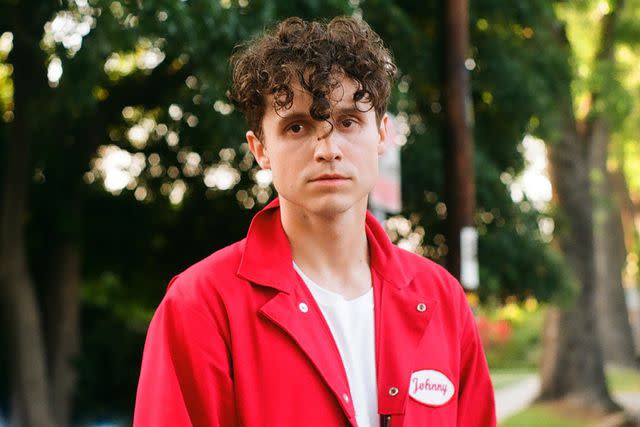
Courtesy of John Lindahl
JohnnyIndeed, when the first part of the cinematic series, John Lindahl’s CULT CLASSIQUÉ, begins, it’s clear that the artist John Lindahl dominates every aspect of the six-part full length, feature film.
However, calling him just an artist would be a vast understatement. The 27-year-old not only writes, directs, produces and acts in the role of Johnny himself, but also edits, executive produces and leads the costume and set design of the project. Just when you think he can do no more, he also busts a sudden dance move, launching into a segment of flawless choreography.
But what’s perhaps most unique about the project is that it is a music-led film — a first-of-its-kind, all-encompassing universe with one artist’s vision at the front and center. The film’s storyline is completely based on the progression of Lindahl’s 13-track album of the same name — the full album that the California native also wrote, performed, arranged and produced on his own.
Unlike the chicken and egg dilemma, Lindahl says the album came first. But while he was writing, a collection of several intense scenes almost simultaneously visualized themselves in his mind.
“I’m a janitor. There’s murder that’s happening. People are dying,” he lists to PEOPLE matter of factly during an interview. “There were all these scenes where Johnny was doing very specific things, but it didn’t make sense why he was doing those things.”
He first strung together these disparate events with a script. From there, he worked with a small crew and filled in the shoes of every other role, no matter how big they were.
When seeing how Lindahl makes being a jack of all trades look easy, it’s hard to believe that at one point, he was discouraged from growing further as an artist. But even though a former manager told him to stick in one lane, he decided to go the exact opposite route. That means he refuses to put limits on himself or any artist, despite what others or his inner self-critic might say.
“I’m never the one to say they can or can’t,” he says while comfortably seated in his room and de facto workspace, situated in sunny California.
In similar fashion to the way viewers approach Johnny, Lindahl also starts to give little hints and anecdotes that paint a better picture of his own artistry. For instance, he mentions how director John Carpenter's 1978 Halloween movie was “on repeat” in the background of his room while he was working, and how “underrated” he believes the Insidious franchise is. From there, it’s easy to connect where he got his horror inspiration from, and how the mood of CULT CLASSIQUÉ was ultimately conceived.
At a distance, Johnny arguably shares many similarities to the infamous Michael Myers character. While the former constantly wears a blood red jumpsuit and carries around a knife, the latter also hides himself behind an iconic white mask as he bears a blade.
Related: How to Watch the Halloween Movies in Order
But Lindahl is quick to emphasize that the film isn’t a formulaic slasher film. Where he diverges from the beaten path is through the details —- complexities so small, that ironically, they collectively make up a big part of the viewing experience.
“I want you to really imagine feeling for the character Michael Myers,” he poses. “That would be the craziest experience ever — and that’s why I say I mixed together Edward Scissorhands, Michael Jackson and Michael Myers into one person that really creates a complex experience for the viewer. Like, what do I feel?”
Related: Behind the Mask: See the Actors Who Played Iconic Horror Movie Villains
What does one feel? Often, it’s difficult to ever root for a villain or an anti-hero when the default emotion is strong dislike, bordering on hate. However, Johnny also seems to suffer from his own existential confusion, in which viewers can’t help but empathize with. That’s because they know that at some point, they’ve all been able to relate to the lyrics he sings, like that of Track 3, titled "You Don’t Know Me."
“My life has been spiraling / Oh, but you don’t know me / This feeling inside of me is not who I wanna be”
That track alone begs the question: Who is Johnny?
Track 2, simply titled "Johnny,," defines the question not just for the audience or for Johnny himself, but also amongst the other film characters. Answering the question won’t be as straightforward and certainly won’t happen until the very end, according to Lindahl.
Although he’s promised to lay out a trail of breadcrumbs along the way, small morsels can’t ever fully satiate a ravenous hunger. And yet, that’s exactly what makes each song and part of the film so enticing. Amidst all the layers, he’s forcing viewers to piece together a puzzle that slowly fits together as more characters, songs and motivations are introduced.
“It’s very carefully crafted to where you don’t fully know what’s going on till the end,” he says with a hint of mystery.
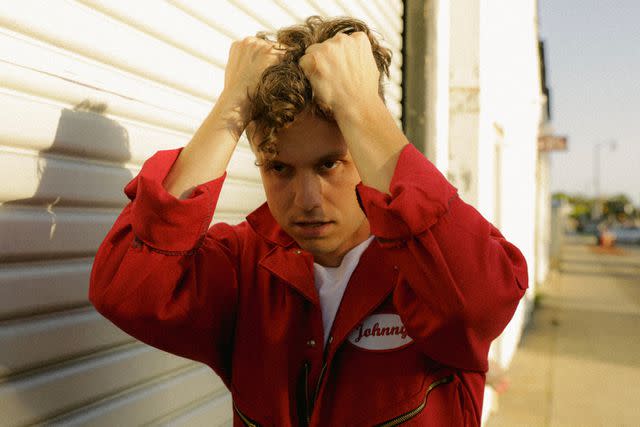
Courtesy of John Lindahl
JohnnyHowever, one clue may lie in Lindahl’s own life.
“Johnny is the heightened example of how I feel on the inside,” he says. “Johnny is me. [He’s] who I am when I take the mask off.”
He’s quick to clarify that he doesn’t mean he has an inner voracious appetite for murder. Rather, Johnny is more so a representation of his suppressed emotions, rather than a realistic portrayal. His actions also back this up —- Johnny certainly wouldn’t ask someone about how their day’s going, but Lindahl would, as he does so when speaking with PEOPLE before the interview even begins.
When he then launches into the project, it’s clear that he “could talk about it for years.” There’s a sense of passion one can immediately pick up from the way he talks and thinks about the “microcosm” he’s concocted.
However, it’s a passion that almost completely disappeared during the height of the pandemic, when he descended into a “dark hole” of severe depression for almost two years. Much of the loss was a culmination of events that stemmed back to 2011, when a 14-year-old Lindahl entered the music industry at the X Factor live shows.
The "Don’t Be Scared" singer went on to amass a series of impressive achievements, like singing with Ed Sheeran at the Grammys, earning two record deals and even opening for Logic on the rapper’s tours.
When the pandemic first struck, derailing all the original plans Lindahl had fantasized about for his first full album, John LIndahl’s Opening Night, he tried to pivot by creating a Christmas album, A John Lindahl Holiday. Yet, when he couldn't do anything further outside of his bedroom confines, the darkness reached a new low.
“I’m guilty of thinking everything I do when I put all the time into it is going to be the biggest thing in the world,” he says. “I believe it so wholeheartedly.”
Related: Rick Springfield Wants His Story to Help Others Battling Depression: 'I Want Them to Have Hope'
Wholehearted self-belief also goes hand-in-hand with risk of vulnerability. Against a backdrop of an ultra-competitive music industry that changes at the speed of light, holding onto that belief without getting hurt can be incredibly difficult. It can even be inevitable, like for Lindahl, whose creative process was becoming at odds with where the industry was headed.
While noticing an increasing emphasis on quantity rather than depth, the "Killing Me Loudly" singer felt unable to keep up with the breakneck pace. It was also when he began to come to terms with how entering the industry at a young age made him focus on “trying to be a pop star,” rather than authentic self-expression.
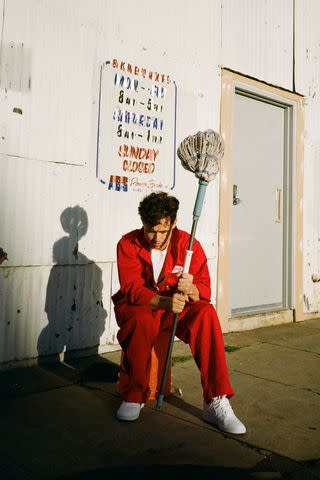
Courtesy of John Lindahl
JohnnyIt was at this point where he fell into a different hole — a rabbit hole of online interviews with directors and auteurs, or those who would write and direct their own scripts. Seeing how they would “obsess over a character in a world for seven years” struck several chords with the "Call Me By My Name" singer.
The first was a reckoning, where he reflected on who he was, stripped of all past achievements. Instead of leaning away from going all in, he was determined to do the same, but no longer purely for others or the idea of what he thought he should be.
“I was so afraid. I never want to feel that loss of passion again,” he recalls of his breakthrough moment. “If anything, I want to dive so deeply so I can satiate my own hunger and needs as an artist.”
The energy that propelled the CULT CLASSIQUÉ album forward was suddenly born. But instead of working with record labels like before, he took a leap of faith and went the independent route. With full freedom to dive into wherever his curiosity took him, the conception of an accompanying feature film was realized.
Finally, the passion he thought he had fully lost rekindled — the same passion that sparked at age 4 when his grandparents showed him the movie Singin’ in the Rain, when music theory clicked with him right away in school or when he fell in love with his favorite directors.
“I think it was a lot of suppressed emotions that I felt in being an artist in the industry, the disappointment and people wanting me to be a certain thing that I just couldn’t embody, and then relegating myself to the janitorial role where I’m picking up after people and just being in the background,” he muses. “This album and film is a way that I was understanding things about myself — characteristics and traits and feelings that I didn’t even know I had.”
With a breath of relief, Lindahl releases all his pent-up feelings in the best way he knows how — funneling them into a universe of his own creation.
“Johnny is all about the people who believe in themselves and believe that there’s something great, but they don’t have confidence or that cool factor in the way we’ve seen already,” he says. “Johnny’s about being insecure and not being able to shake that feeling, but still pressing on and believing you’re bigger than what people say you are.”
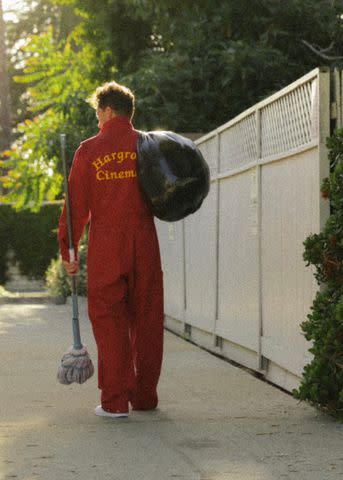
Courtesy of John Lindahl
JohnnyIn addition to acting as Johnny, working on so many other behind-the-scenes roles for the film is also a deliberate choice, he says. It not only makes him a more well-rounded artist, but also gives him the chance to assert his “vision,” or what he dubs his “Lindahlian style” — a signature that’s full of motifs, a growing cast of characters and a special emphasis on pacing, which is centered around the music rather than dialogue.
“Listen to everything you hear, because it’s going to come back at some point, like a motif,” he emphasizes.
True to his affinity for literary devices, he also foreshadows that there’s much more to come in his emerging cinematic universe. In addition to his existing merchandise, he’s already planning action figures and even a video game. It’s a new music era structured around worldbuilding, he says, rather than just disparate music releases. It’s where he can make his own “tangible universe” come to life.
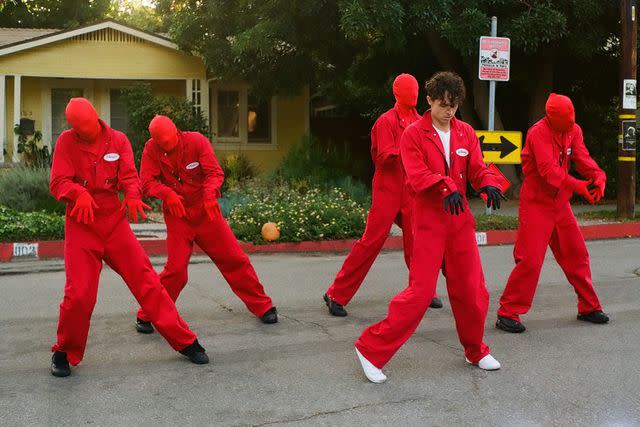
Courtesy of John Lindahl
Johnny and the Shapes“I like latching onto things when I’m a fan of something,” he explains. “I want to know everything there is to know and I want to give anyone who’s a fan of me to dive as deeply in as they want to.”
Thanks to Lindahl’s involvement in nearly every bucket of the project, his fans can rest assured that every part, note, costume and the most minute of details are all part of his cohesive vision.
Perhaps that’s why it may be called a “Cult” Classiqué after all.
“I always say that art is expansion,” he thoughtfully says. “An artist can open one door haphazardly without even thinking about it and just walk away from that door. But, you see that door and you’re like, ‘That is everything. I want to dig that hole all the way to the Earth’s core.’”
John Lindahl’s CULT CLASSIQUÉ album and Part 1 of the six-part film is now available to stream.
For more People news, make sure to sign up for our newsletter!
Read the original article on People.

